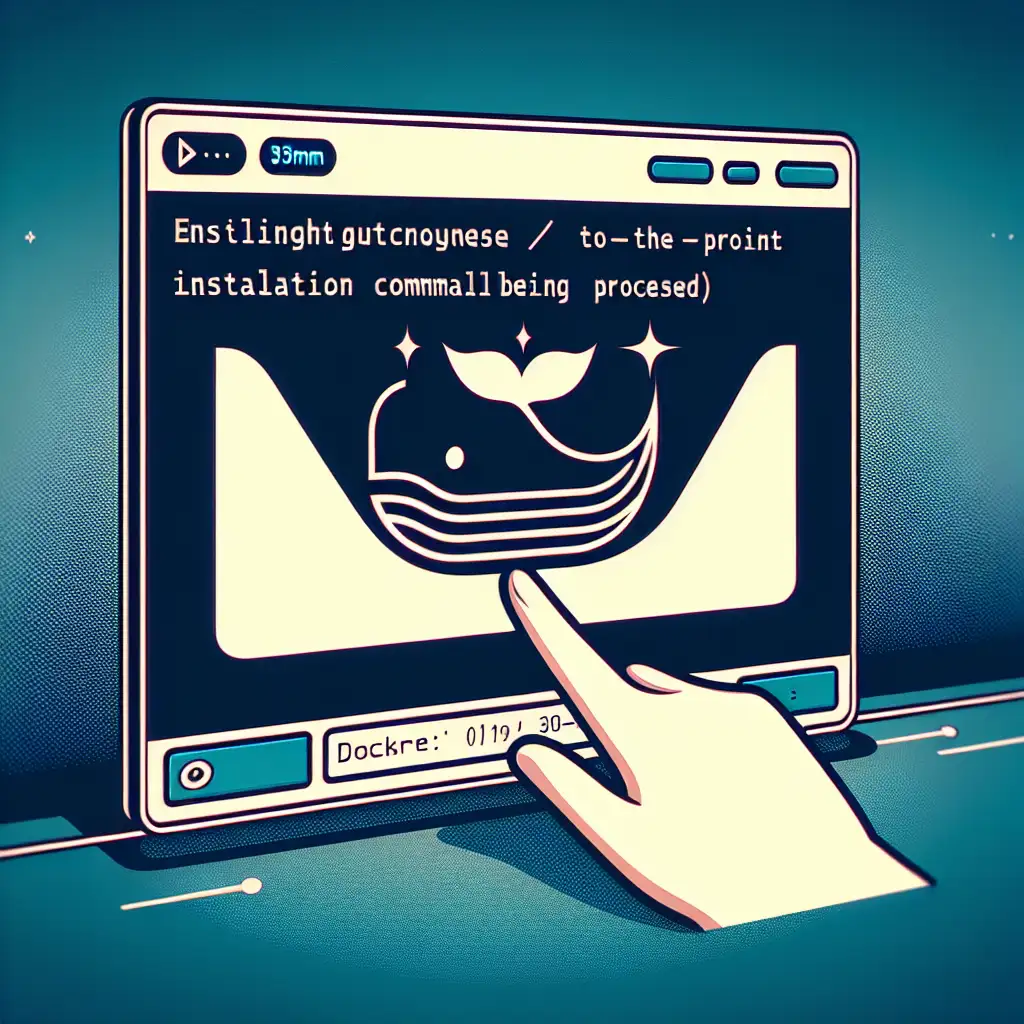Mastering the Command to Install Docker: Simplify Your Container Setup in One Step
Forget complex installation guides loaded with unnecessary steps. Learn the definitive command that cuts through the noise and gets Docker up and running—fast, reliable, and clean. It’s about working smarter, not harder, from day one.
Installing Docker efficiently is foundational for developers and IT professionals to streamline containerization workflows, reduce setup time, and avoid configuration errors that delay deployment. In this post, I’m going to show you the command you need to install Docker on your machine—no fluff, no guesswork.
Why Focus on a Single Command?
Docker installation instructions can feel overwhelming at first glance: add repos, update systems, manage keys, handle dependencies... It’s no wonder many developers find themselves stuck or wasting precious time.
But there is a better way.
Many Linux distributions provide a simple one-liner for installing Docker using their official convenience scripts. This approach handles all the prerequisites under-the-hood, detects your OS version, installs the latest stable release of Docker Engine and CLI—and configures everything to work immediately.
By mastering this one command, you get:
- The latest stable Docker version
- Automatic handling of dependencies
- Verified installation via official sources
- Minimal manual intervention
- Reliable installs across various distributions
The Magic One-Liner Command
Here it is—the canonical way recommended by Docker’s own documentation for Linux users:
curl -fsSL https://get.docker.com | sh
What does this do?
curl -fsSL https://get.docker.comdownloads the official Docker installation script.- The pipe (
| sh) immediately executes that script withsh.
This convenience script detects your Linux distribution, adds necessary repositories and GPG keys securely, updates your package listings, and installs Docker Engine plus CLI with minimal fuss.
Step-by-Step Usage Example
1. Open your Terminal
2. Run the installer command
curl -fsSL https://get.docker.com | sh
3. Add Your User to the Docker Group (Optional but Recommended)
To use Docker commands without sudo, add your user to the docker group:
sudo usermod -aG docker $USER
You’ll need to log out and back in for this to take effect.
4. Verify Installation
After installation completes, verify Docker runs correctly:
docker --version
You should see output like:
Docker version 24.0.5, build f3504c2
Try running hello-world container for good measure:
docker run hello-world
If it prints a friendly greeting message, congratulations—you have successfully installed Docker with one command!
What About Other Operating Systems?
-
macOS: Use Docker Desktop for Mac — installation is simple via a DMG installer.
-
Windows: Use Docker Desktop for Windows — relies on Hyper-V or WSL 2 backend.
The one-liner above shines primarily on Linux environments (Ubuntu/Debian/RHEL/Fedora). For other OSes or specific configurations, refer to official docs but remember: Linux users can safely embrace this simplicity.
Quick Troubleshooting Tips
If the install script fails or you face permission issues:
- Ensure you have
curlinstalled (sudo apt install curlon Debian-based distros). - Run the command with elevated privileges if needed (
sudo sh):
curl -fsSL https://get.docker.com | sudo sh
- Double-check network access; firewall/proxy issues may block the script download.
Wrapping Up
By mastering this simple command...
curl -fsSL https://get.docker.com | sh
...you save time and headaches getting Docker up and running. No more hunting down dependencies manually or piecing together multi-step tutorials—just streamlined container setup that works right out of the box.
Your next projects can start faster—because your tools are ready faster.
Try it now on your Linux system and enjoy simplified containerization from day one! 🚀
If you found this helpful or want me to cover Docker commands beyond installation, drop a comment below!
